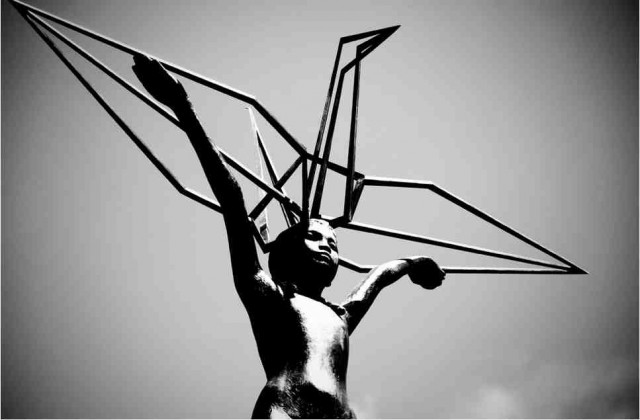Sadako Sasaki was a bright and energetic girl. Her parents had always to tell her to sit still. Sadako lived in Hiroshima and when she was just two the atomic bomb was dropped only 1 mile from where she lived. Though the Sasaki family survived the blast they could not escape the radioactive soot that began to fall like snow all around them.
Sadako grew into an athletic child and a fast runner. She was on the school relay team. Though she tried to hide the occasional dizzying spells from her team members, one day she collapsed on the track. She was immediately taken to the hospital where she was diagnosed with Leukemia. She got the cancer from the exposure to radiation from the atomic bomb when she was two.
Her best friend Chizuko visited her in the hospital and told her of the legend that if you folded a thousand paper cranes the gods would grant you your wish. Sadako began to fold paper cranes with the hope that she be granted a wish to live a long life. Unfortunately she died when she had managed to fold only 644 cranes. Her friends and schoolmates then gathered together and folded the remaining 356 cranes and the thousand cranes were buried with her. She was 12 years old.
Soon a fund raising drive was begun to build a statue in memory of Sadako. Three years after her death a statue of Sadako holding a giant origami crane was installed in the Hiroshima Peace Park. Now every year on Obon Day (On this day the Japanese remember their departed ancestors) thousands of people leave paper cranes near the statue. On the statue is a plaque that reads: “This is our cry. This is our prayer. Peace on Earth!”
In many ways the prophecy of a thousand cranes proved true and Sadako lives on today in our memory. Her life and struggle has now become an international symbol of the innocent victims of war.
More details of the Sadako story.
You may also like: Widening Our Circle Of Compassion

